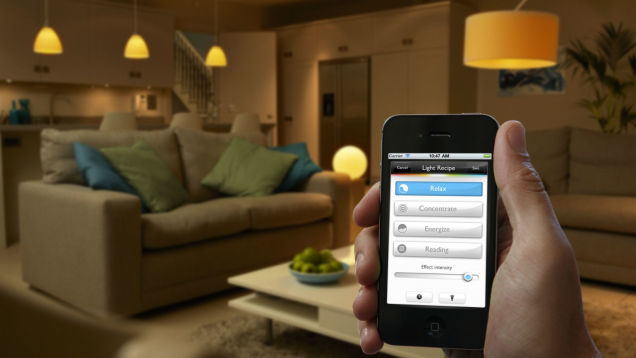
KCI: Winter Edition
December 9, 2019

I thought this would be a great opportunity to re-evaluate indoor lighting choices. We’ve seen the trend toward greener lighting options which traditionally have not provided the most flattering color of light. Until now. After much research I’ve finally discovered an option that actually gets me excited about the prohibition of incandescent bulbs!
Those of you who are early adopters may already be aware of WiFi enabled bulbs, but for the rest of the world this is an amazing advance in not only the light in your home, but how you actually interact with your home’s lighting.
Much like an automobile that comes with an external ignition to get it started without you having to brave the elements – light bulbs are now interactive remotely. Imagine controlling the lighting in your home while sitting on a beach in Grand Cayman, or creating different moods via various colors and sequences during a dinner with friends, or getting rid of that nasty alarm clock and gently waking up to a slowly brightened room. Pretty cool huh! Now imagine being able to do this floor by floor, room by room, bulb by bulb.
During my investigation of various lighting options I reviewed 2 controllable light bulb manufacturers – LIFX and Philips Hue. Read on to learn more about these fascinating and dramatic lighting options.
LIFX is one of those Kickstarter darlings that raised a ton of cash online. Now, even Google has taken notice and it seems this little bulb company is on the precipice of a huge tech success story.
LIFX is a smart bulb that allows you control color, brightness and white levels with your iPhone or Android smartphone. It’s a Wi-Fi enabled, multi-color, energy efficient LED light bulb. The bulbs don’t require a bridge or a hub to be turned on/off or controlled.
Of course you’re thinking that with every rain of sunlight, there must a little dark side, right? Some of the cons are that they can be costly and the app is still a bit of a work in progress.
Take a look at this video if you’d like to see what this smart bulb can do….
Philips Hue has had a bit of jump on LIFX and is generally a less costly product. It requires a bridge to your WiFi network, but also offers a wireless smart switch in addition to your smartphone for controls.
Take a look at this clip:
From my my non-techie perspective the differences between the two are based on digital platform and track record. LIFX has been making great strides, but HUE has been around for a bit longer and is more proven.
Now…if all of this is overwhelming. Here is some info on a basic non-tech LED bulb…
I went searching for the latest and greatest in LED and boy are there some fantastic choices out there. Manufacturers like Cree, Feit, Lighting Science, Philips and Sylvania have created great quality and efficient bulbs that have stellar color rendering (CRI). That’s the thing that describes the quality of light in the room (cool or warm)
To re-create the light of an incandescent bulb look for a temperature of 2700-2900K and has a CRI of about 90 to recreate the warm incandescent glow. While an LED bulbs have been relatively expensive, prices are dropping fast. You should consider the cost of the bulb over time and believe me…that initial investment is NOTHING.
The new choices in bulbs can be overwhelming when simply trying to buy a replacement for a standard A19 60 W bulb so I put together a simple graph to help you translate (see below). It will be helpful to know that wattage refers to the amount of electricity a bulb uses while lumens refers to bulb brightness. Stick with warm white or soft white for most indoor use.
Lumens Incandescent LED
450 40 W 4-5 W
750-900 60 W 6-8 W
1100-1300 75-100 W 9-13 W
1600-1800 100 W 16-23 W